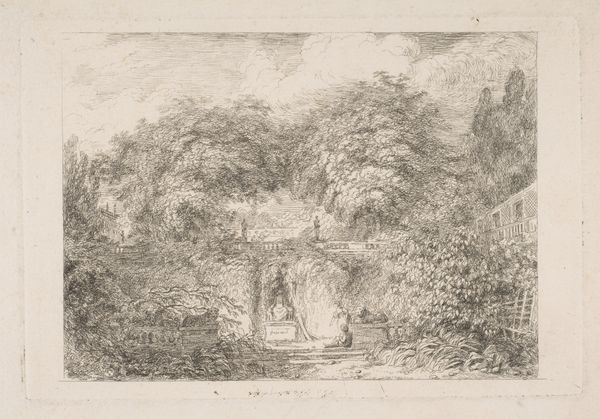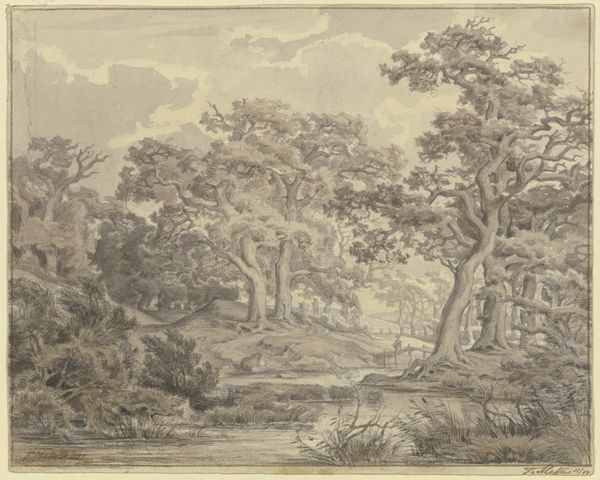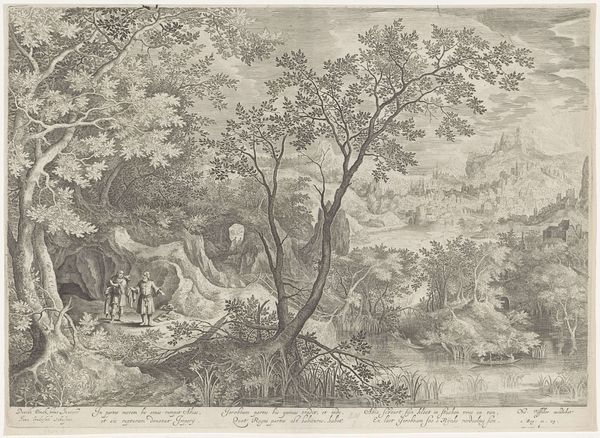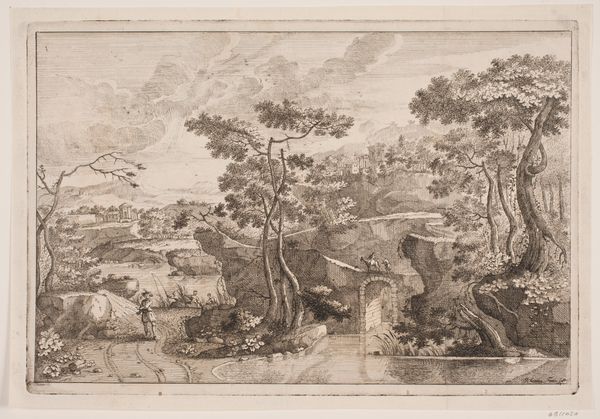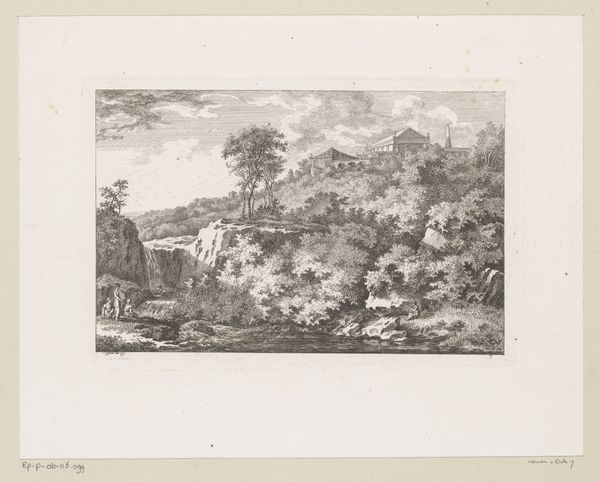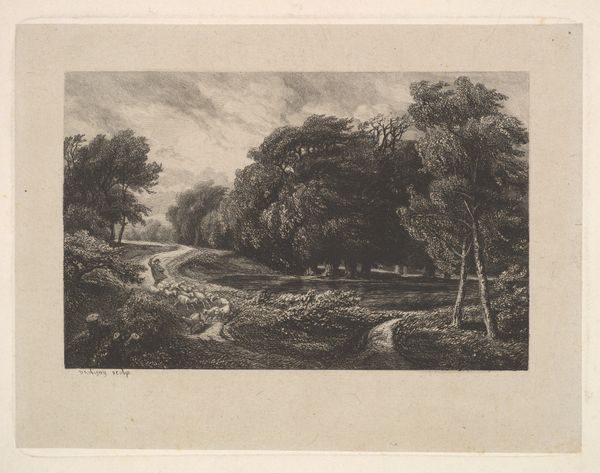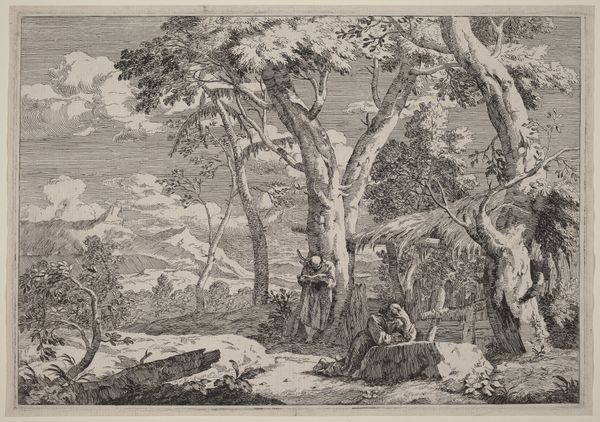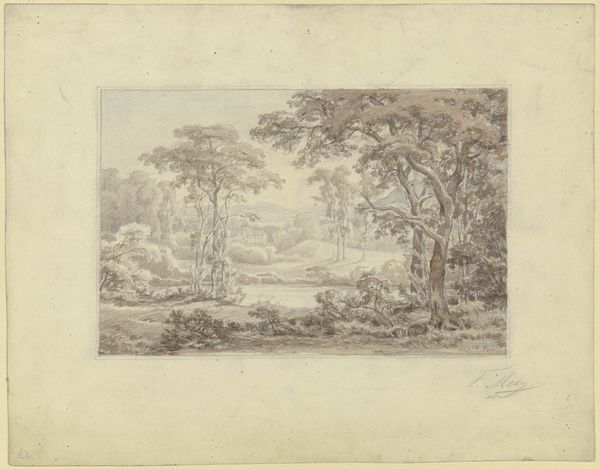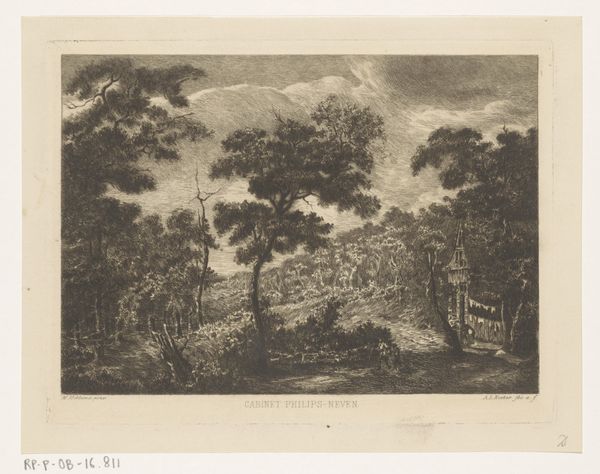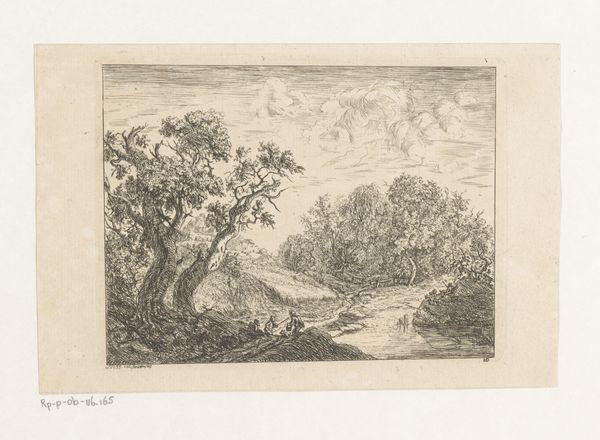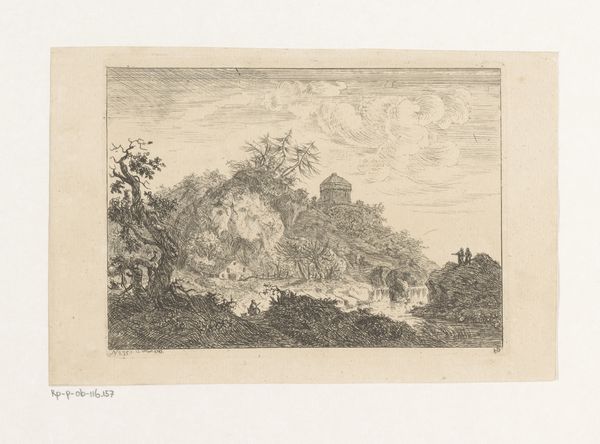
drawing, ink, pencil, pen
#
drawing
#
neoclacissism
#
landscape
#
charcoal drawing
#
ink
#
pencil
#
pen
#
genre-painting
Dimensions: overall: 24.6 x 37 cm (9 11/16 x 14 9/16 in.)
Copyright: National Gallery of Art: CC0 1.0
Curator: Oh, there's a hushed, dreamlike quality about this landscape. Like a scene whispered rather than shouted. Editor: Indeed. We’re looking at François-André Vincent's “Park of an Italian Villa,” a pen, pencil, and ink drawing rendered circa 1774 to 1775. Notice how the interplay of dark charcoal strokes and delicate ink lines articulate the scene. Curator: The trees form such dense canopies. It's quite cleverly composed: The way the eye travels from the shadowed foreground into these almost ethereal background details is superb. The architecture seems almost reclaimed by nature itself. Editor: Precisely! Vincent's deployment of contrasting tonalities underscores the picturesque aesthetic characteristic of the period. It speaks of the Romantics' developing fascination with the sublime found in nature. Curator: Though one foot seems stuck in Neoclassicism, with that very ordered architectural backdrop. But the waterfall element cascading into the quiet pool really does pull the piece back to a raw, primal appeal. I also wonder, who were these parks intended for? Surely the experience of the working person was very different from the gentry relaxing in this curated wilderness? Editor: Good point, yes. This would definitely represent an idealized retreat, a constructed paradise reflecting the aspirations and sensibilities of the affluent class, rather than social realism. The artwork serves to aestheticize an existing social disparity. Curator: But even within that rarefied world, I detect something more. It’s hard to put into words – perhaps the quiet loneliness that idealized nature always inspires, divorced from true necessity. The human cost for so much order, one may ask? Editor: A provocative thought. The very absence of human activity beyond statuary invites reflection. Well, on close inspection, what appeared initially to be a romantic fantasy has deeper philosophical implications. Curator: Well, it’s a beautiful paradox, isn’t it? Vincent offers a lens onto the era's aesthetic preferences, but perhaps he prompts us, despite himself, to confront some deeper societal nuances, also. Editor: A delicate dance between form and inquiry indeed.
Comments
No comments
Be the first to comment and join the conversation on the ultimate creative platform.
